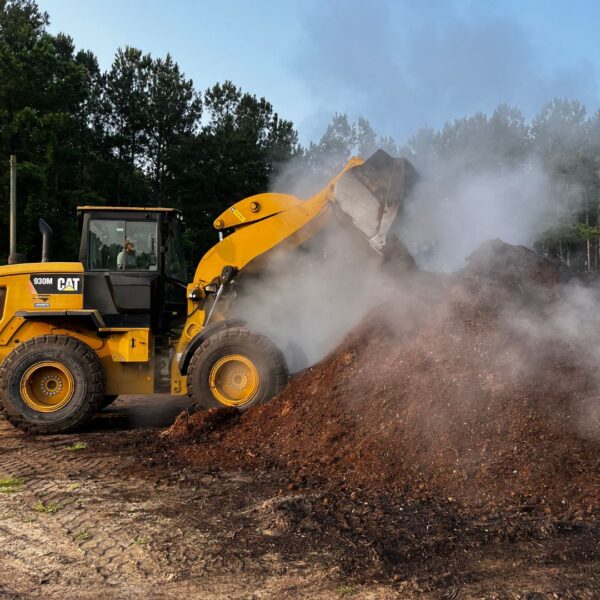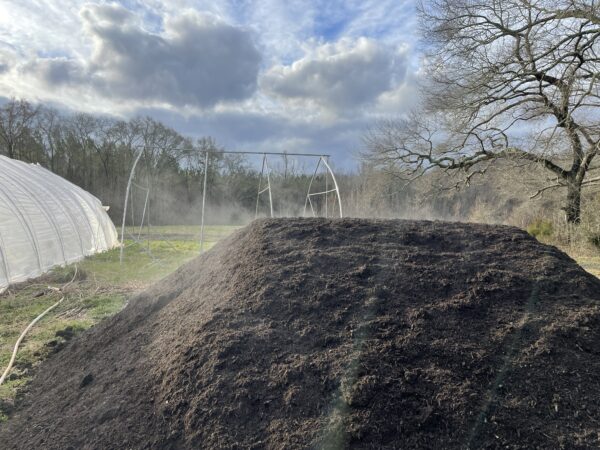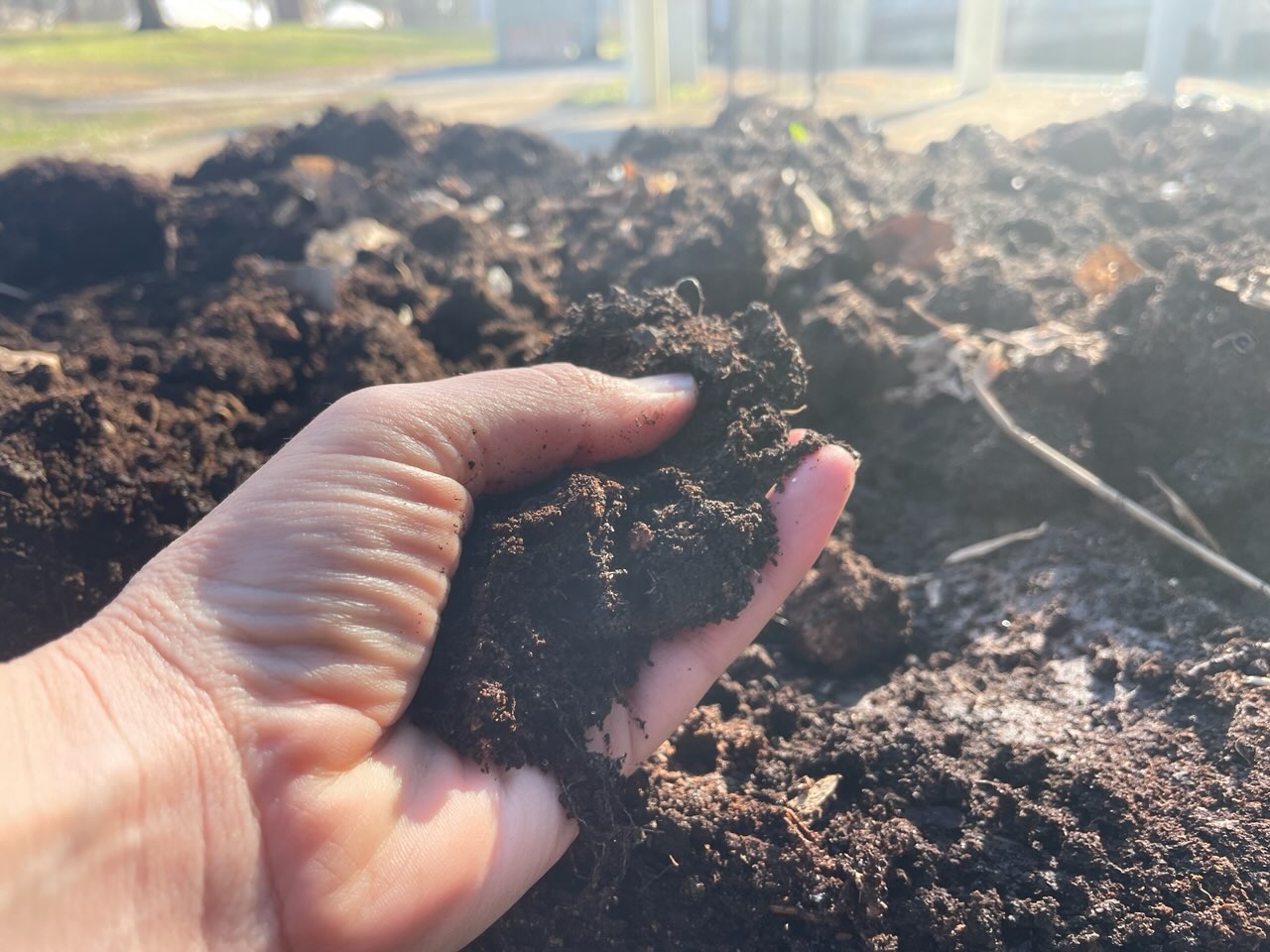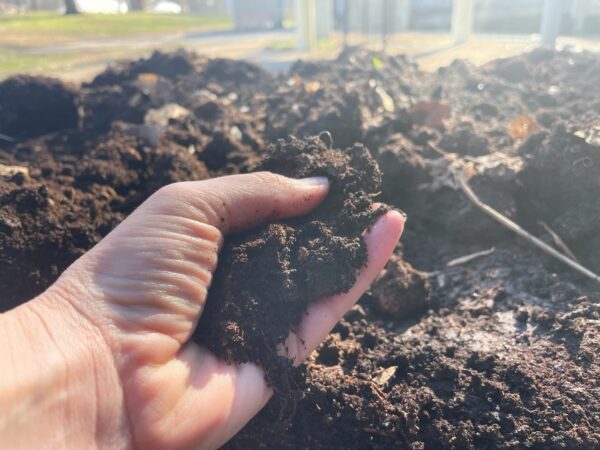by Amelia Bruss, CFSA Soil Health Technician
When considering what soil amendments might suit your crop needs, basic soil health can sometimes be overlooked, especially during peak season when time is limited. It’s essential to consider overall soil health in your fertility management planning for many reasons, including; reducing erosion, maximizing water infiltration, drainage, and aeration, improving nutrient cycling, increasing nutrient availability, improving structure, spending less money on inputs, and ultimately increasing overall resiliency in the soil.
When soil is not in good condition, diseases, pests, and deficiencies are more likely. For your soil to offer nutrients to a crop, it must be in good enough shape to make those nutrients available. To optimize any added amendment, we need to ensure our soil is healthy enough to do so. Soils can contain and transmit disease and harbor pests; you can avoid many of these issues by maintaining beneficial soil biota, balanced nutrient cycling, and water infiltration. So, maintaining healthy soil is preventative and proactive
A few key factors must be considered before adding amendments to your soil, like; soil condition, compaction, live plant roots in the ground, water, and building organic matter. These factors will significantly impact the effectiveness of any amendment you incorporate into your soil.
The first step in amending your soil should always be a soil test. A basic soil test will tell you if the soil is in excess or deficient in nutrients. It will also provide the ph and organic matter content. Soil pH is important because plants can only correctly uptake nutrients if the levels of acidity or alkalinity are in their ideal range.
Soil testing is crucial for nutrient management in a high tunnel. According to Joe Rowland, CFSA Organic Initiatives Coordinator, “The lack of rainfall and leaching may enable growers to build and sustain adequate soil fertility for optimal crop growth. On the other hand, this can also lead to an accumulation and overabundance of nutrients and salts that are detrimental to crop production. As with many things, you can always add more, but removing excess is challenging.” Understanding where your soil currently stands is critical in moving forward with any soil health plan, especially if you intend to use external inputs. Soil testing is essential and could be an entirely separate article. Contact our Farm Services team for technical assistance on soil and water testing!

Riley Alber turning piles at Wilmington Compost Company
Addressing soil compaction is essential, especially in the highly weathered clay soils of the South East. Compaction occurs when soil particles are pressed together, which reduces the pore spaces between the particles. It reduces plant root penetration, reduces the rate of infiltration and drainage, and can significantly hinder the presence of microbial life and so much more. You can figure out if your soils are compacted using a soil penetrometer; you may be able to use one provided by your local extension agent. You can address compaction issues with broad forking on a smaller scale or using a subsoiler on a larger scale. It is important to note that working the soil too wet is a great way to cause further compaction.
Cover crops and other biological inputs can be an excellent tool in decompacting soil, but it does not happen overnight. Using these biological methods with physical decompaction like board forking or sub-soiling will expedite the process and ultimately increase the effectiveness of inputs like compost or cover crops.
Keeping a diversity of live plant roots in the soil as many days a year as possible is critical to maintaining healthy soil biota. It is an integral part of making soil amendments bioavailable to plants. Through photosynthesis, plants feed the microbes; in exchange, the microbes make the nutrients available to the plants. Beneficial soil microbes perform essential functions like; fixing nitrogen, making nutrients like phosphorus more readily available, decreasing plant stress, and aiding in decomposition that improves soil aggregation.
Water is essential to nutrient uptake in plants and building organic matter in the soil. You do not need a state-of-the-art irrigation system; you just need to ensure your plants can access moisture through the soil. Living plant roots, mulches, and compost aid in increasing the water-holding capacity in the soil by adding soil organic matter. As you feed the microorganisms in the soil and increase your organic matter, your nitrogen needs will start coming from the soil instead of an external amendment. Now you’re feeding the soil and not the crop.
Soil organic matter is plant, animal, and microbial residues in various states of decomposition; it is a critical ingredient in building the soil’s nutrient bank. The percentage of organic matter in soil is one of the best indicators of agricultural soil quality. Adding organic matter can look like incorporating cover crops and plant residue, using mulches, integrating livestock, and adding compost.

Steamy compost at CFSA’s education and research farm, Lomax Farm
Riley Alber of Wilmington Compost Company recommends growers, when purchasing compost, know their composter. Much like the idea of “know your farmer,” the mission is the same. By keeping it local, you can ask questions about the ingredients going into the compost and the products they are making. The benefits of compost go much further than when you just purchased it, and you should have confidence in the product you put into your soil. When applying quality compost, you add much more than your NPK (nitrogen, phosphorus, potassium). The microbiology that thrives in good quality compost breaks down the nutrients in the soil so that they are more readily available to plants. Compost can be used as a soil amendment and a topdress for nutrients. Compost feeds the soil, not just the plant, and the beauty of it is it’s a long-term releasing amendment that provides nutrients and builds organic matter.
You only need to consider adding an amendment when there is a deficiency; otherwise, adding amendments just for the sake of it will lead to the buildup of excess nutrients, leaching, and other issues in the future. Applying a nitrogen source like fish emulsion before transplanting can be highly effective for heavy-feeding crops like cucumbers. When working in a high tunnel, foliar sprays can be an excellent option for treating deficiencies. Send a tissue sample to a lab to figure out what deficiencies you need to be treating for.
A small sampling of organic soil amendments include:
- Leguminous cover crops
- Molasses
- Compost
- Kelp
- Compost tea
- Neem seed meal
- Vermicompost
- Folic acid
- Manure
- Humic acid
- Fish emulsion
- Crab shell meal
- Biochar
Riley made a good point, there are a lot of folks promoting the use of compost on small-scale farms and singing high praises of its use in producing beautiful, high-yielding soils, but the reality is that many of these farmers have been working on building, feeding, and healing those soils for a long time. In my opinion, one of the biggest challenges in addressing soil health is that it takes time.
So much work and research goes into understanding plant nutrition and soil health, and so much of that information is constantly evolving. We know that adding diverse living roots, organic matter, and soil structure management leads to better soil health over time.
In closing, be careful, do your research, and get in touch with a professional like your local extension agent or our technical assistance staff at CFSA; managing nutrients on your farm can be daunting, but luckily there are a lot of professionals and resources available to help!
Do what works for you; just know that it takes time. If you need help, CFSA is here to support you.



